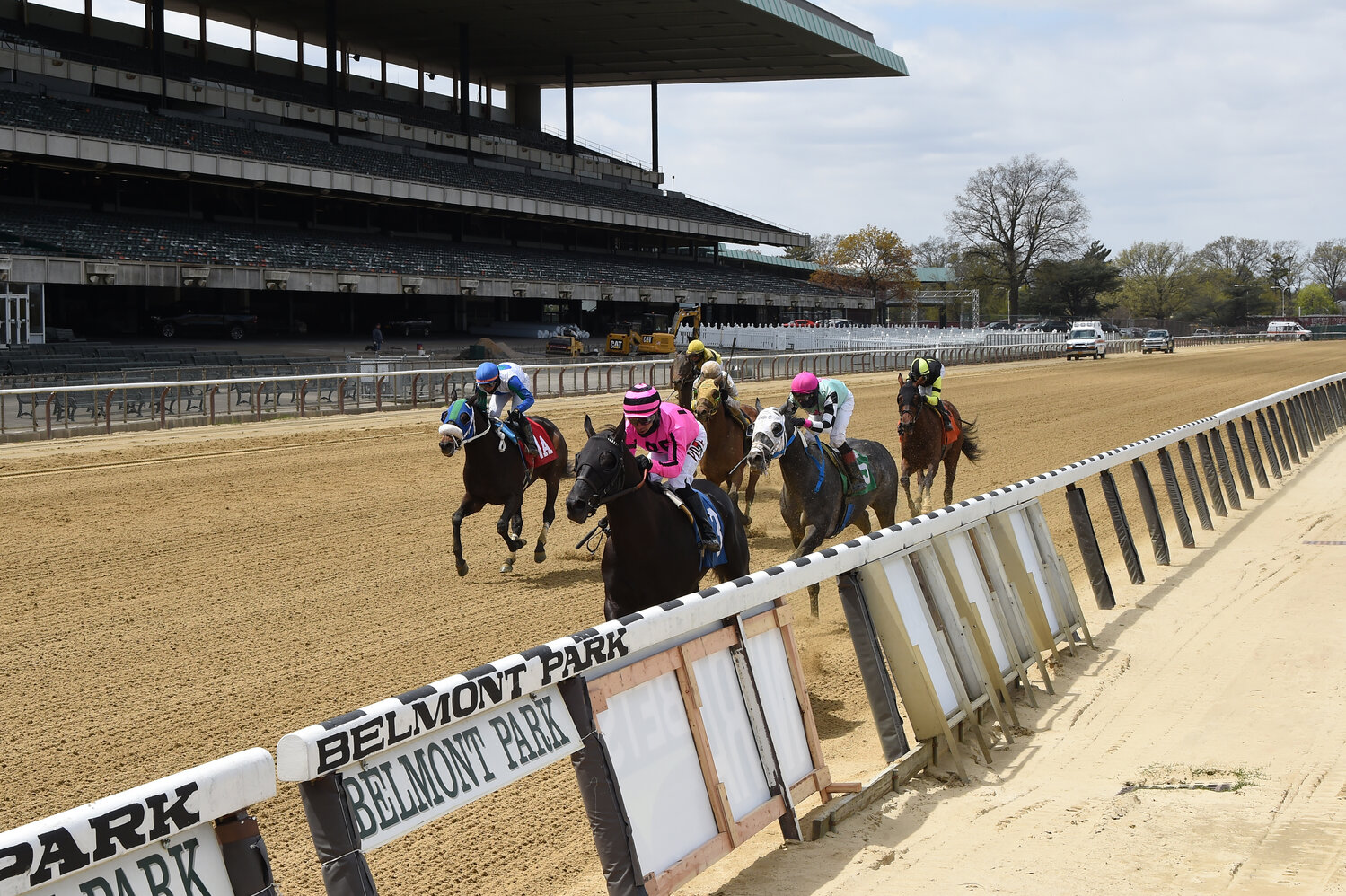Animal activist appeals Belmont suit decision
Malverne activist alleges horse racing abuse
Belmont Park is a fixture on Long Island — but does its cost to taxpayers outweigh its benefits? John Di Leonardo, who lived in Malverne for 30 years, alleged in a lawsuit against New York state and the New York Racing Association that the state's $455 million loan to the park is an unconstitutional use of taxpayer money.
The suit, which was backed by People for the Ethical Treatment of Animal, was originally filed last year, but was dismissed in court by New York Supreme Court Judge Peter Lynch in October. Di Leonardo, an anthrozoologist and the founder of animal advocacy nonprofit Humane Long Island, and co-plaintiff Jannette Patterson filed an appeal in May, to which NYRA responded on July 8. The case is currently being reviewed in appellate court.
The suit alleged that it is unconstitutional for state funds to be used to subsidize a private corporation. However, NYRA is a not-for-profit organization run by the state. Further, the court ruled that because Belmont operates on state land, any improvements made to it are benefiting the state. Further, courts have established in the past that the state may loan money to a private entities if the loan is for a “predominantly public purpose.”
“Judge Lynch’s decision validates the importance of this transformational project, which will deliver the world-class Belmont Park that New Yorkers deserve while creating thousands of jobs and generating billions on economic impact for Long Island and the state,” Pat McKenna, a spokesman for NYRA, said in a statement to the Herald. “Belmont Park is a New York State asset, and the modernization of the facility will dramatically improve that asset.”
The question, Di Leonardo said, is how state support of the racetrack can be justified when “the people have already spoken” on horse racing. Attendance at Belmont has dropped 88 percent since 1978, according to the End Horseracing Subsidies Coalition.
Meanwhile, horse fatalities continue to increase. Belmont’s horse fatality rate has reportedly risen in seven of the past eight years, with more than 30 horses dying there in 2023. The actual number is likely much higher, Di Leonardo said, because the total does not include horses that may have died after being auctioned off, or those that died later as the result of injuries sustained during races.
“I think that these industries want to hide the abuses and the deaths from the public because Long Island cares about animals,” Di Leonardo said. “New Yorkers care about animals. And if they knew about how these animals were dying for $2 bets, they would not be supporting them.”
“NYRA needs to stand on its own, or die like the 30 horses that it killed last year,” he added.
Sweeping abuse under the rug is an industry-wide problem, said Janice Blake, of Franklin Square, who was a jockey for 20 years and also exercised horses at Belmont.
“There’s really no regulatory body that checks on the horses to make sure they’re sound and ready, and properly cared for, to be raced,” Blake said. “Trainers know how to fix the horses so they don’t look like they’re hurt. And they keep pushing the envelope. They just push and push and push and push and push until tragedy strikes. And then it’s very public. And then, ‘Gee, he never took a bad step’ kind of thing.”
“They know,” she continued, referring to the horses’ trainers and owners. “They just don’t want to lose money. They don’t want to look bad to their owner and say, ‘This horse has an injury that needs time.’ And time is a four-letter word. They don’t want time. They want an ATM machine that keeps making money.”
In an additional statement to the Herald, McKenna said that because of the work of the Horseracing Safety and Integrity Authority, “racing is now under one set of consistent rules along with the strongest medication controls the sport has ever seen.”
And he added, the new Belmont Park, now under construction, will “set the gold standard for equine health and safety.” It will feature an all-weather synthetic surface, and will, McKenna said, “provide horses and riders with the most reliable and consistent track surfaces in the sport of horse racing.”
But those improvements can’t fix racing’s fundamental problem, Di Leonardo said: A its core, it is an industry that breeds horses for speed, prioritizing it over safety, and that relies on their exploitation.
“These thoroughbreds, in particular, are forced to race when their bones are still developing,” Di Leonardo said. “They’re literally babies being forced to run harder and harder under threat of abuse if they don’t learn fast enough.”
But with his case now sitting in appellate court — where a decision takes six months, on average, and there is no time limit — there is little Di Leonardo can do. Belmont’s reconstruction — making use of the $455 million in state funds — is well underway. The work is expected to be completed in 2026.






